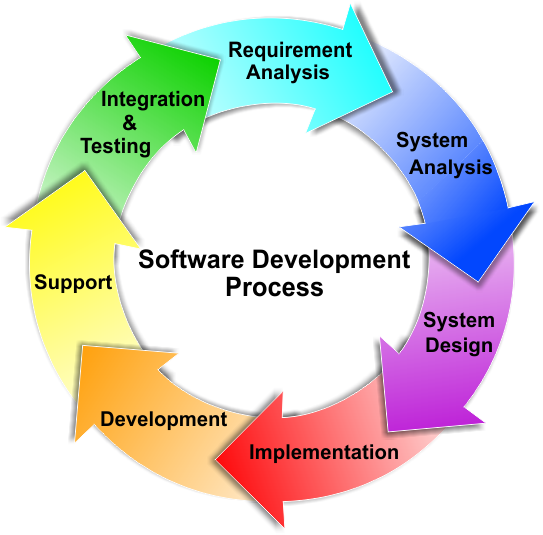
The software development process, also known as the software development life cycle (SDLC), is a systematic approach to designing, building, testing, and maintaining software applications or systems. It consists of several phases and activities that ensure the successful creation and deployment of high-quality software. While there are various SDLC models (e.g., Waterfall, Agile, DevOps), the fundamental stages and principles remain relatively consistent. Here is an overview of the typical software development process:
Planning:
- Project Initiation:
The process begins with identifying the need for software and defining the goals, scope, and objectives of the project. This often involves conducting feasibility studies and defining project constraints.
- Requirements Gathering:
Developers work closely with stakeholders (clients, end-users, etc.) to gather and document detailed requirements for the software. These requirements serve as the foundation for the project.
Design:
- System Architecture:
In this phase, the high-level system architecture and design are established. This includes defining the software’s overall structure, components, and how they interact.
- Detailed Design:
Detailed specifications for individual software components/modules are created, including data structures, algorithms, and user interface designs.
Implementation (Coding):
- Developers write the actual code based on the design specifications. This is where the software is built according to the defined requirements and design.
Testing:
- Unit Testing:
Developers test individual units or modules of code to ensure they function as intended.
- Integration Testing:
Different modules are integrated and tested together to ensure they work cohesively.
- System Testing:
The entire software system is tested as a whole to verify that it meets the specified requirements.
- User Acceptance Testing (UAT):
End-users or clients test the software to validate that it meets their needs and expectations.
Deployment:
- Once the software passes all testing phases, it is deployed to a production environment where it becomes accessible to users.
Maintenance and Support:
- After deployment, ongoing maintenance is essential to address bugs, make updates, and adapt to changing requirements. This phase can last for the entire life of the software.
While this traditional SDLC model represents a sequential approach, modern development practices often embrace iterative and agile methodologies. Agile methodologies, for instance, emphasize flexibility, customer collaboration, and incremental development, allowing for more frequent updates and quicker responses to changing requirements. DevOps practices also focus on automating and streamlining the development, testing, and deployment processes to enhance efficiency and reduce time-to-market.
It’s worth noting that the software development process is not always linear, and different projects may adapt or combine these phases to suit their specific needs and constraints. The choice of SDLC model depends on the project’s nature, objectives, and organizational preferences.
